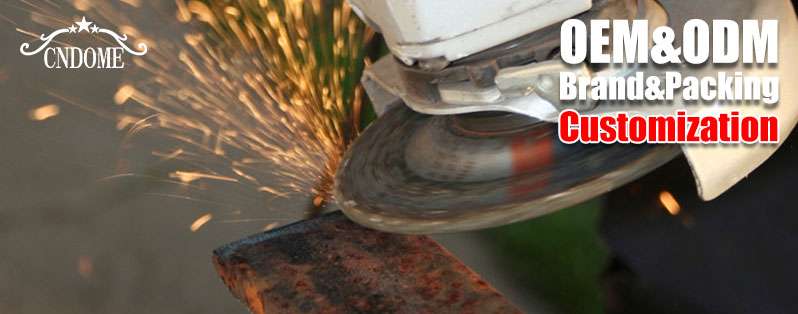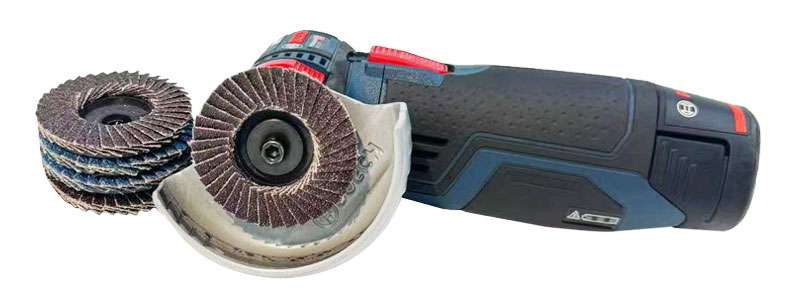When it comes to metalworking, the choice between a flap disc and a grinding disc can significantly impact your project’s efficiency, finish, and overall quality. Both tools have their unique advantages and are suited to different tasks. Here, we’ll explore the key differences, benefits, and applications of flap discs and grinding discs to help you make an informed decision.
What is a Flap Disc?
A flap disc is an abrasive tool used primarily for finishing, blending, and light stock removal. It consists of multiple overlapping layers of abrasive-coated flaps attached to a hub. These flaps are usually made of materials like aluminum oxide, zirconia, or ceramic, and they wear away gradually, exposing fresh abrasive grains.
Benefits of Flap Discs:
- Smooth Finish: Flap discs provide a smoother finish compared to grinding discs, making them ideal for jobs requiring finesse.
- Versatility: They can grind, blend, and finish in one step, reducing the need for multiple tools.
- Longer Lifespan: The layered flaps wear away evenly, offering a consistent cut and longer lifespan.
- Reduced Vibration: The design of flap discs often results in less vibration and noise during operation, making them more comfortable to use.
Applications of Flap Discs:
- Surface Preparation: Ideal for cleaning, deburring, and rust removal.
- Blending and Finishing: Excellent for blending weld seams and finishing surfaces to a smooth state.
- Light Grinding: Suitable for light to moderate material removal.
What is a Grinding Disc?
A grinding disc, also known as a grinding wheel, is a solid abrasive wheel used for heavy-duty material removal. Made from abrasive grains bonded together by a matrix, grinding discs are designed for aggressive cutting and can handle tough grinding tasks.
Benefits of Grinding Discs:
- Aggressive Material Removal: Grinding discs are perfect for heavy stock removal and tough jobs.
- Durability: They are designed to withstand high pressure and heat, making them durable for demanding applications.
- Variety of Abrasives: Available in various materials like aluminum oxide, silicon carbide, and diamond, catering to different hardness and material requirements.
Applications of Grinding Discs:
- Heavy Grinding: Ideal for removing large amounts of material quickly.
- Cutting: Suitable for cutting through hard materials like metal and stone.
- Sharpening Tools: Can be used to sharpen blades, chisels, and other cutting tools.
Key Differences Between Flap Discs and Grinding Discs:
1. Material Removal Rate:
- Grinding Disc: Higher material removal rate due to its solid construction and aggressive nature.
- Flap Disc: Lower material removal rate but offers more control and a smoother finish.
2. Surface Finish:
- Grinding Disc: Leaves a rougher surface, often requiring additional finishing steps.
- Flap Disc: Provides a finer, more polished surface, often eliminating the need for further finishing.
3. Tool Longevity:
- Grinding Disc: Tends to have a shorter lifespan as the entire disc wears out uniformly.
- Flap Disc: Typically lasts longer because of the gradual wear of the flaps.
4. User Comfort:
- Grinding Disc: Can cause more vibration and noise, leading to user fatigue.
- Flap Disc: Generally offers a smoother, quieter operation with less vibration.
Choosing the Right Tool:
- For Heavy-Duty Grinding: If your task involves substantial material removal or cutting through tough materials, a grinding disc is your best bet. It’s robust and designed for high-performance tasks.
- For Finishing and Versatility: When your project requires a smooth finish or involves a mix of grinding and finishing, a flap disc is more suitable. Its ability to blend and finish surfaces in one step makes it a versatile tool for many applications.
Conclusion
Both flap discs and grinding discs have their place in metalworking and other abrasive tasks. Understanding their strengths and ideal applications will help you choose the right tool for your job, ensuring efficiency and the desired finish. Always consider the specific requirements of your project and the characteristics of each disc to make the best choice.




